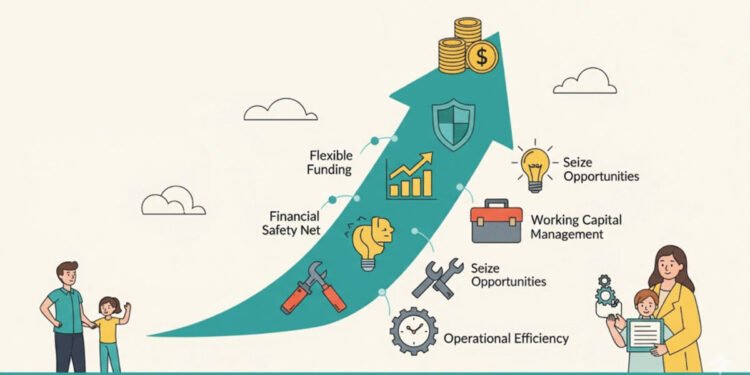Managing several lines of credit demands a strategic mix of discipline, awareness, and proactive habits. For startups and growing businesses, access to multiple credit lines can fuel growth and provide safety nets during lean periods. Discover how solutions like a startup business line of credit can offer flexibility, but only if handled carefully to avoid the pitfalls of mounting debt.
When used thoughtfully, multiple credit lines enable you to seize opportunities, manage cash flow gaps, and weather unexpected expenses. However, they can quickly lead to confusion, missed payments, or even credit score damage without careful management.
Creating a sound approach to your credit lines is essential. Understanding the terms, tracking your balances, and planning repayments will lead you to financial stability and business resilience.
According to experts at NerdWallet, keeping credit practices organized and making informed decisions are fundamental to controlling one’s finances.
Create a Comprehensive Budget
Begin by mapping out all your income sources and fixed and variable expenses. This complete view will show exactly how much you can allocate toward your monthly credit repayments, helping you avoid overspending and ensuring you meet commitments. Use digital tools or spreadsheets to monitor your budget regularly and adjust for changes in your financial situation.
Monitor Your Credit Utilization Ratio
Your credit utilization ratio is the percentage of available credit you use across all credit lines. Experts recommend keeping this figure below 30% to maintain a strong credit profile. High utilization can negatively impact your credit score and signal risk to lenders. Regularly updating your records and checking your credit card balances helps you stay within healthy limits and strengthens your borrowing credibility.
Set Up Automatic Payments
Late or missed payments are among the quickest ways to damage your credit score. Most lenders provide automatic payment options, allowing you to schedule at least the minimum payment amount. This habit saves time and ensures you never accidentally miss a due date, avoiding costly late fees and negative credit reporting. If possible, set up full-balance payments to minimize interest charges.
Leverage Balance Transfers Wisely
If you carry balances on high-interest credit lines, transferring that balance to a card or loan with a lower rate can lead to substantial interest savings. While balance transfers can be helpful, watch for associated fees and introductory offer expirations that could negate potential benefits. Always read the fine print and have a clear payoff strategy before committing.
Assign Specific Purposes to Each Credit Line
Designating different credit lines for specific needs—such as operational expenses, emergency funds, or larger one-time purchases—makes tracking spending, setting boundaries, and managing repayments easier. This organized approach reduces the risk of confusing your borrowing needs and protects you from overextending one credit line for multiple purposes.
Regularly Review Credit Terms and Conditions
Lender policies can change, and introductory rates could expire, so it’s vital to review the details of each credit agreement periodically. Check for changes in interest rates, annual fees, or repayment conditions. By staying informed, you can renegotiate terms when necessary or shop around for more favorable credit products if your situation changes.
Maintain Open Communication with Lenders
If you foresee challenges in making repayments, contact your creditors proactively. Lenders are often willing to work with you by offering deferments, adjusted payment plans, or even reduced interest rates for a period. Transparent communication protects your credit score and potentially opens up more favorable arrangements until you’re back on track.
Monitor Your Credit Reports
Staying on top of your credit report ensures your recorded borrowing and repayment history is accurate. You’re entitled to a free credit report from each major bureau once a year. Look for errors or unfamiliar activity that could indicate identity theft. Promptly disputing inaccuracies protects your reputation and future borrowing capacity.
Strategically managing multiple lines of credit is achievable with the right organization and diligence. By establishing good habits, keeping informed, and taking a proactive stance on repayment and lender communication, you can enjoy the flexibility of multiple credit lines while safeguarding your financial future.












